Quite countertrend to the current world is the exhibition by Sabrina D’Alessandro, a Milanese artist and linguist who has made words her stylistic signature, set up on floor 0 of the CAMeC - Modern and Contemporary Art Center of La Spezia and open to the public until March 20, 2022. I would like to point out that being against the trend is by no means a defect, on the contrary: in a present in which the written and spoken Italian language is becoming more and more homogenized, resulting in the use of a restricted and not at all varied vocabulary and the suppression of synonyms, I find D’Alessandro’s not only exhibition but also artistic path praiseworthy, as it finally celebrates the richness and infinite potential of the Italian language, made up of nuances, different styles and a vast and varied lexicon, even geographically (think of the many dialects spoken along the peninsula and the specifically dialectal words used). Underlying this is the artist’s great passion for linguistics and lexicography, which she has carried with her since she was a child, when she enjoyed playing in the true sense of the word with her vocabulary to continually unearth and learn new words and their meanings; the desire is to “resurrect” words that have fallen into disuse, to bring them back to attention. The passion has thus turned into a kind of mission, aimed at saving"lost words" from oblivion, and into a job, combining lexicography with art.
Resurrections, Insurrections, Actions 2009-2021, this is the title of the La Spezia solo exhibition curated by Cinzia Compalati and Eleonora Acerbi, stems from the multi-year project that Sabrina D’Alessandro has been leading since 2009, when she founded her URPS - Ufficio Resurrezione Parole Smarrite, the “Body in charge of recovering lost words, although very useful for life on earth.” The URPS’s Charter of Fundamental Purposes states that its purpose is to “bring back to light lost words, that is, words almost defunct in use, and to spread their luminous spirit in order: by researching them, investigating them, expanding them, combining them, reinterpreting them, objectifying them, and artifacting them through photic activities and works of heteroclitic nature.” The Resurrection Office has its centerpiece in the Cemetery of Otherwise Deceased Words, “a small cemetery of obsolete words,” “a temple of remembrance”: “Words die if forgotten; in this sense, a place of remembrance allows otherwise deceased words to be there again.” A bit like Carlos Ruiz Zafón’s Cemetery of Forgotten Books : “When a library disappears, when a bookstore closes its doors, when a book is erased from oblivion, we, the custodians of this place, make sure that it gets here. And here the books that no one remembers anymore, the books lost in time, live forever, waiting for the day when they can return to the hands of a new reader, a new spirit.”
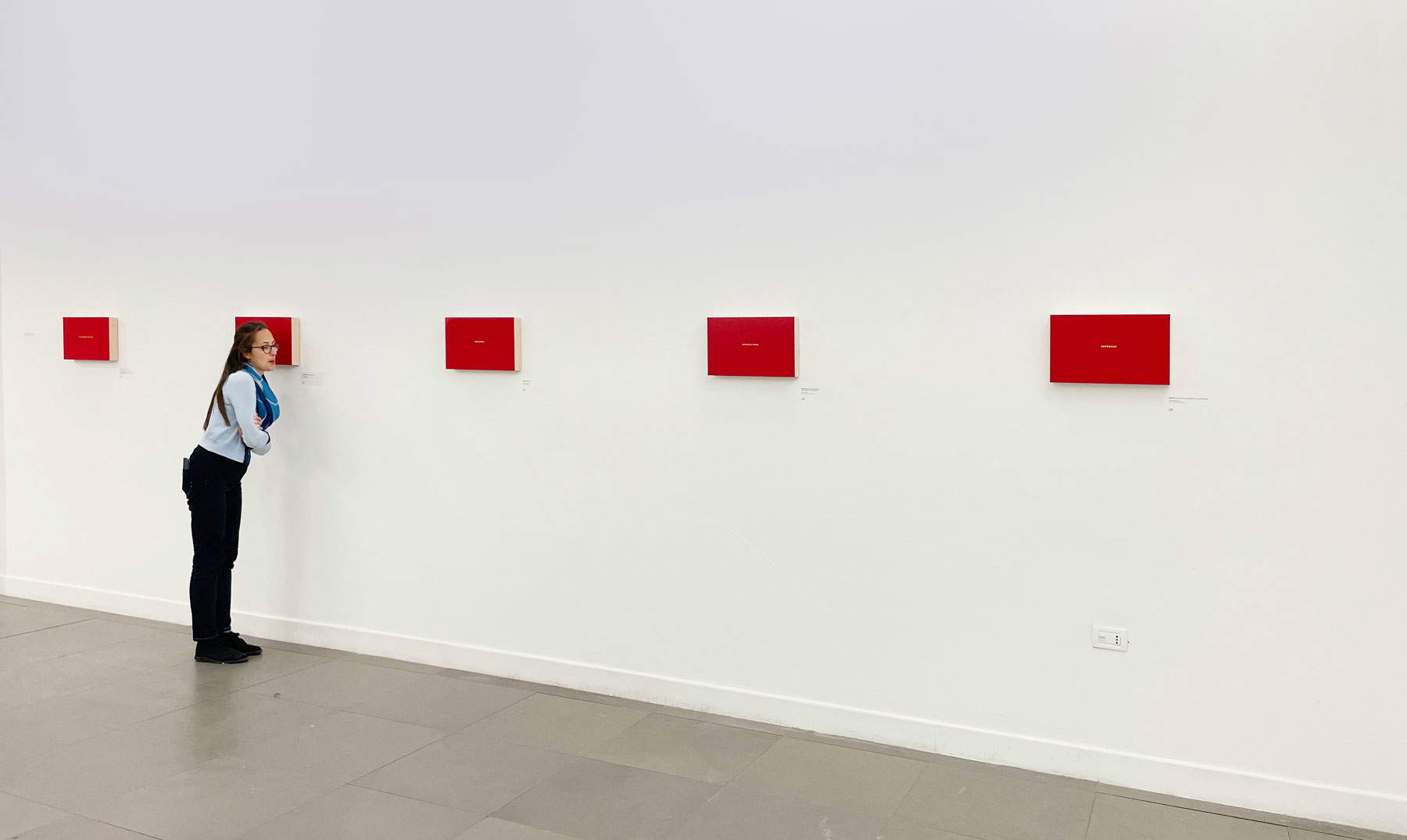
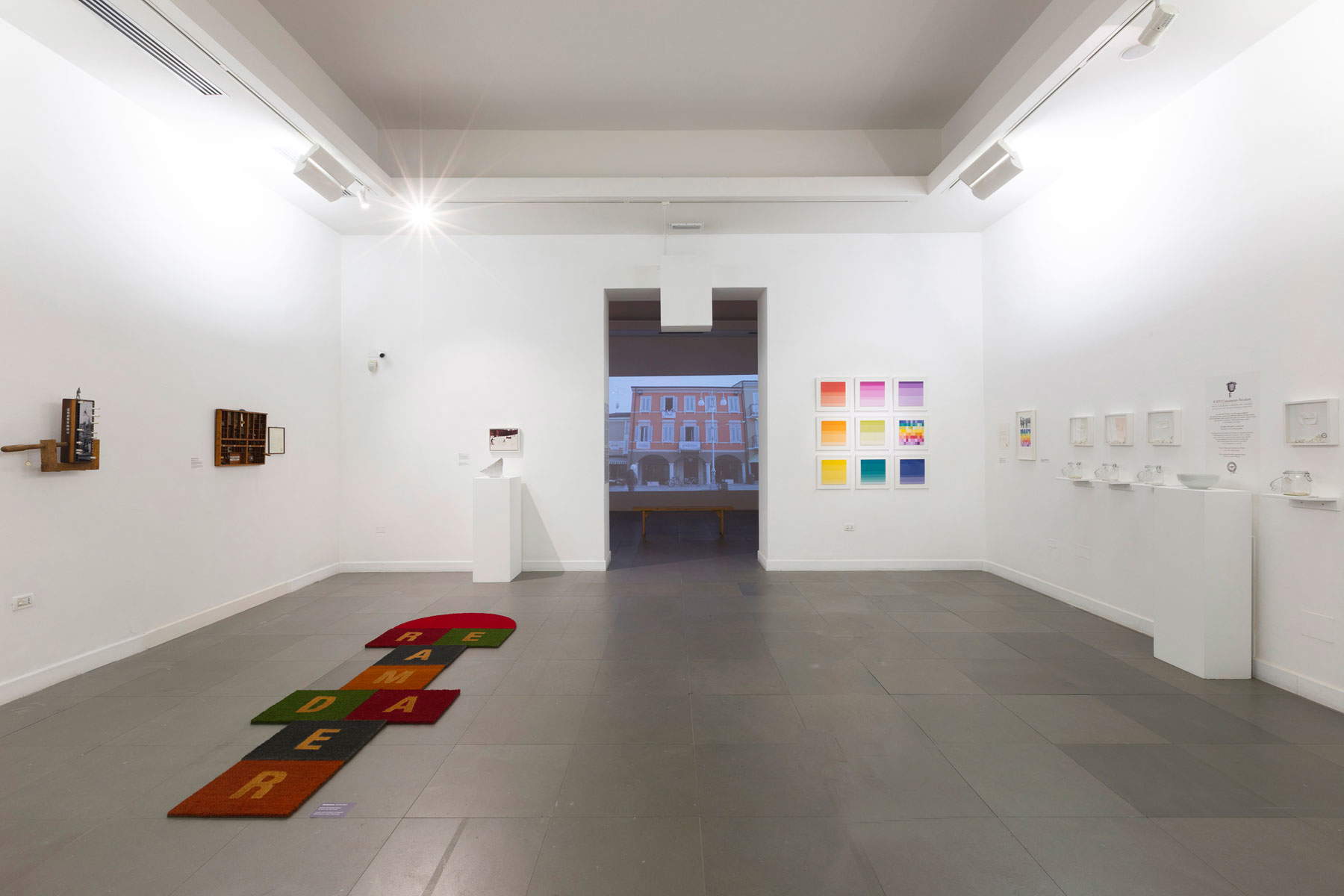
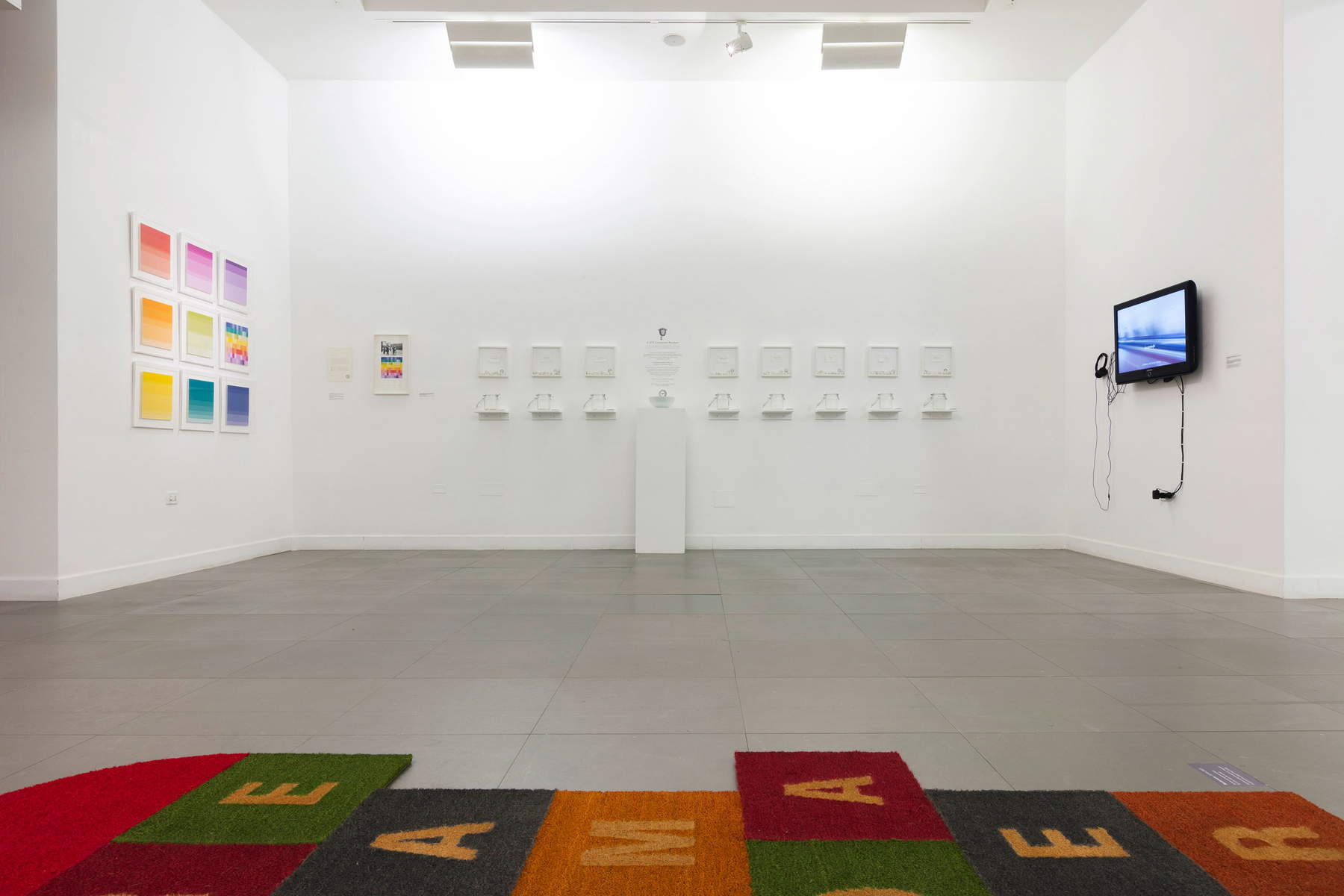
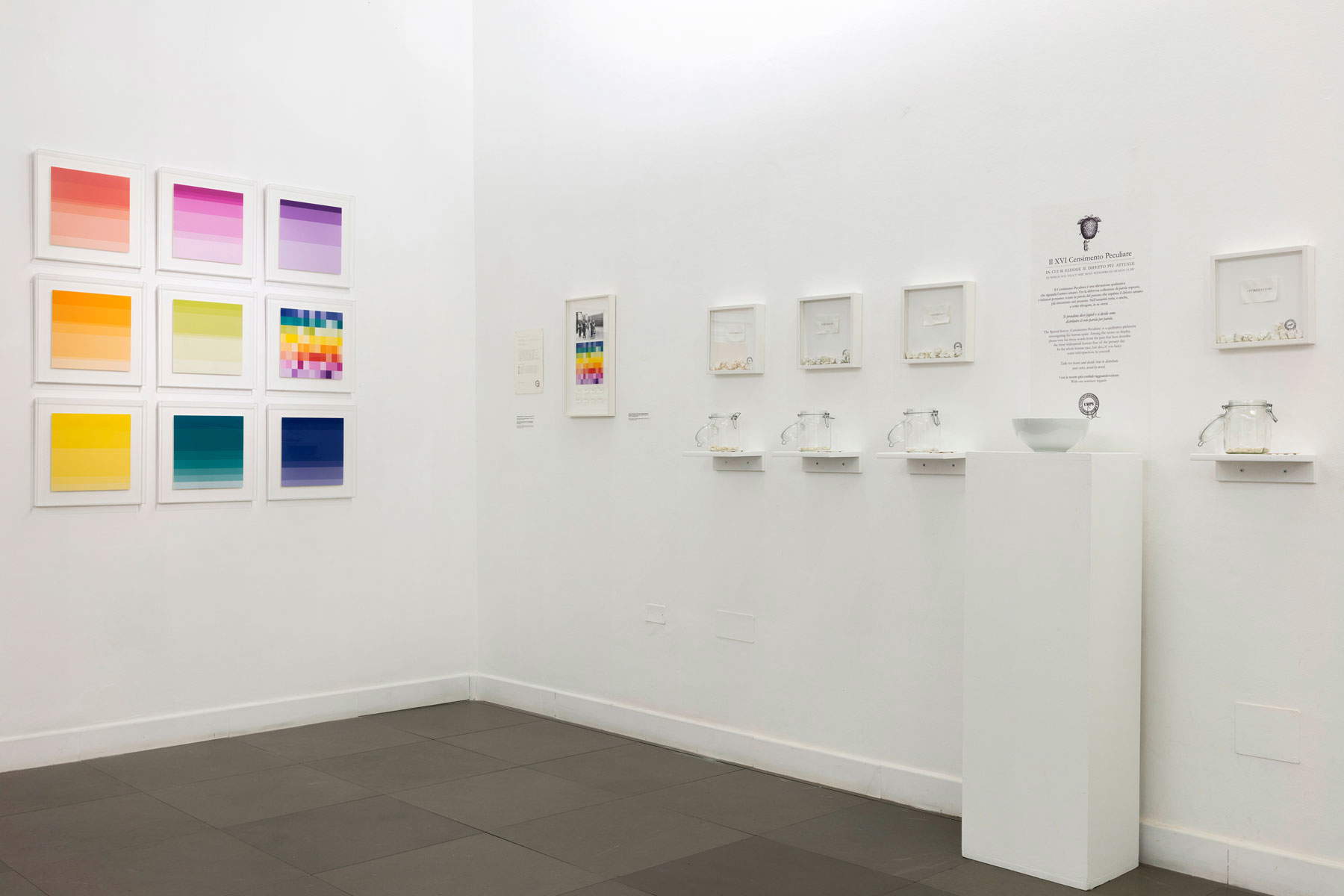
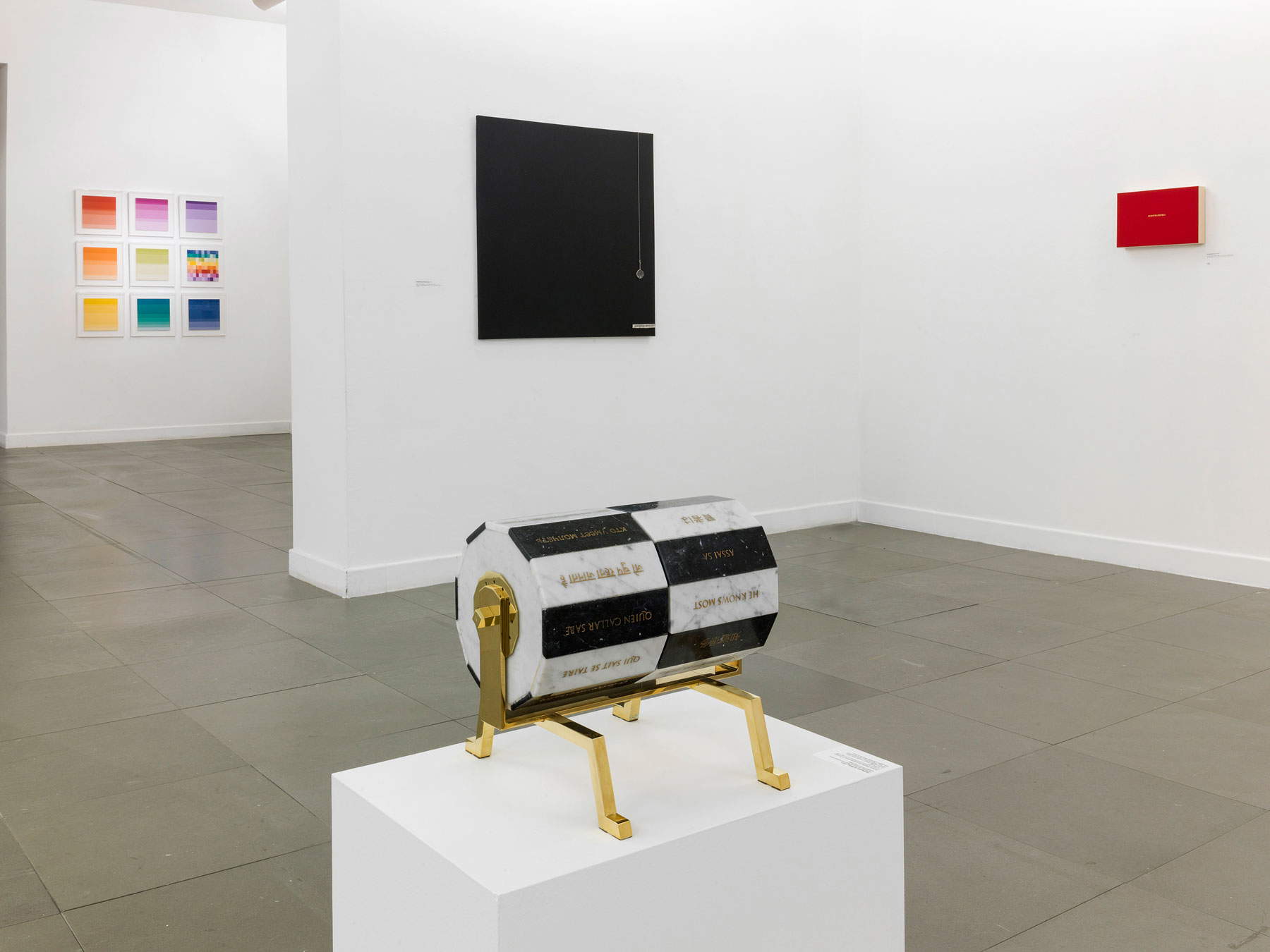

Visiting the CAMeC exhibition thus traces the highlights of Sabrina D’Alessandro’s artistic production, from 2009 to the present, following a common thread: words are always transformed into visual and performance artworks, often requiring interaction with the viewer. The exhibition path goes beyond the mere display of the works, as the visitor is first of all confronted with half-unknown words, who then has the curiosity to discover their meaning, and sometimes also finds himself interacting with the works themselves, in the form of a game. An obvious example of this is the Terriculously Popular Census, which will be discussed later, or Farlingotto.
The exhibition spans three rooms and the corridor of the Center’s O floor.
On the walls of the first room run the Talking Words (2001-2021), words in gold hot-stamped on red canvas. The gold color recalls the artist’s desire to restore the found words to their value as works of art, making them valuable again. Prominent among them all is a particular word, dredged up by Savonarola:"redamare,“ the verb, and its noun, ”redamation," whose meaning is that of mutual love, to love and be loved at the same time. It is a word that has become an icon of D’Alessandro’s production, as it is often found in various forms: for example, the work Redamare (2016-2021) is on view, consisting of as many colored doormats as there are letters that make up the word, joined together and positioned in the shape of the ancient game of bells ( “an invitation to walk through its pattern by spelling out the verb, and to make it one’s own through the playful dimension,” the artist explains). In addition to “redamare” and “redamation,” other Talking Words include “raplaplà” (daily routine), “rifrugatore” (one who broods), “seperoso” (one who lives blissfully), “busillis” (enigmatic knot), “sbaglione” (one who makes a lot of mistakes), and “arruffapopoli” (stirrer of tempers). These are also each accompanied by a voice: a background murmur can be heard, signifying the bewilderment of words in the magnum sea of language, but if the visitor approaches each of these words he or she will hear a looping phrase expressing the concept of the word itself. For example, from “sbaglione” one hears the phrase “however it goes, it will be a death”; from “arruffapopoli” one hears “it is necessary to subvert the moral order, it is necessary to subvert the immoral order”; from “redamare” comes the phrase “io mi intuuo tu ti immii,” a verb coined by Dante in the 9th Canto of Paradise (S’io m’intuassi, come tu t’immii).

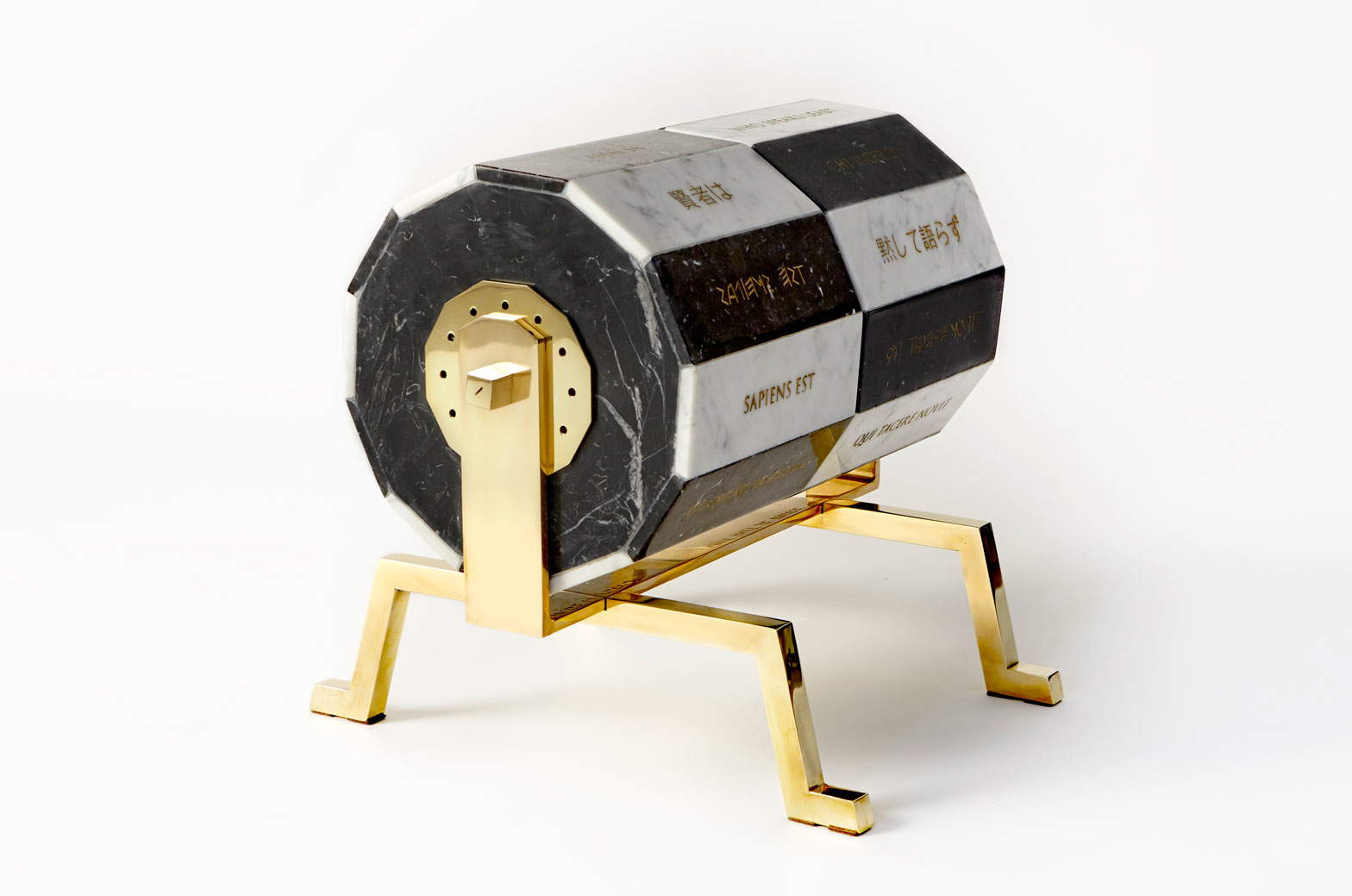
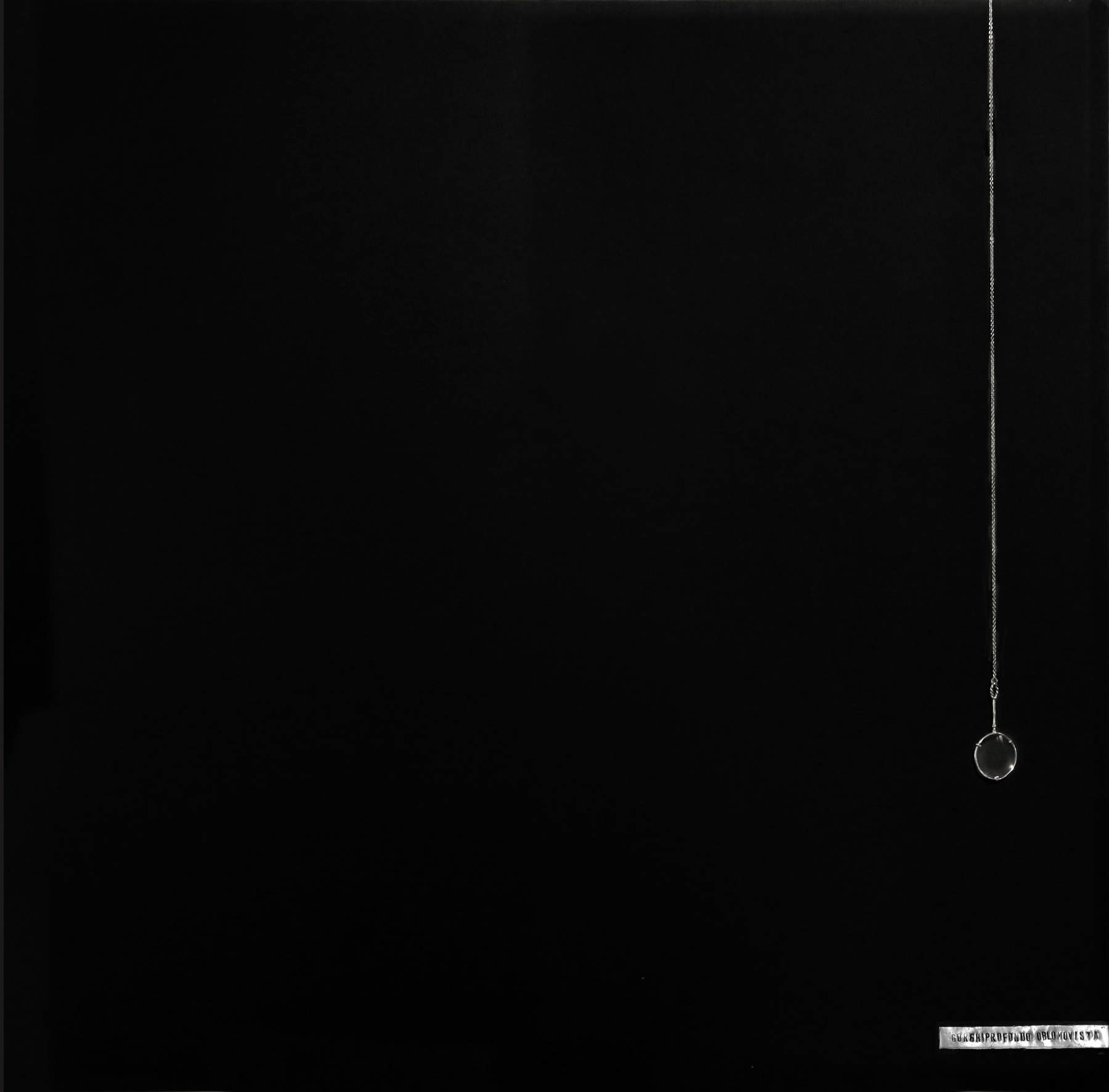
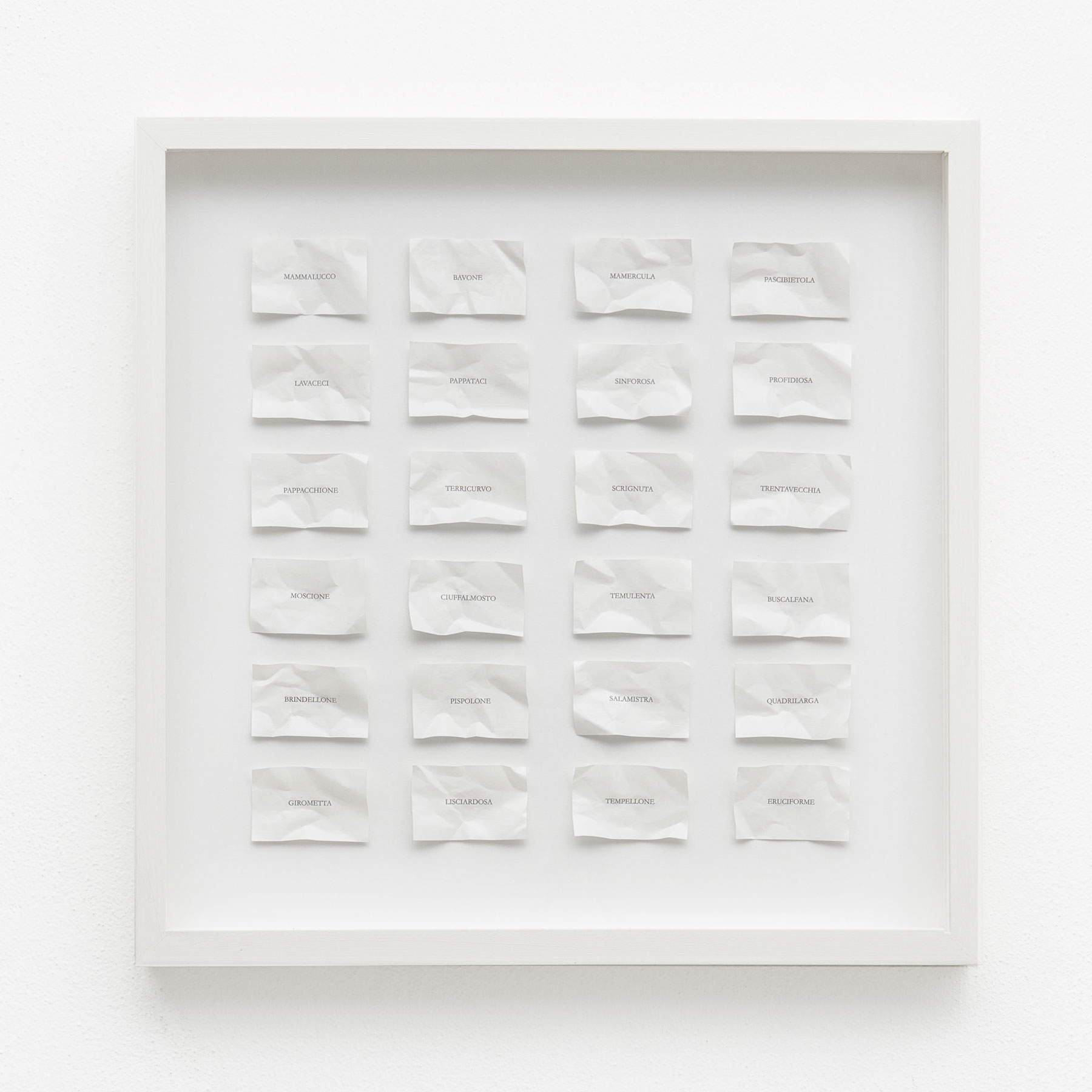

Next in the same room is theArchive of Admissible Words Though Not Yet Resurrected (2010), a plexiglass vitrine in which the crumpled words are those not yet brought back into use, and the Oblomovist Gorghiprofondo (2011), or the one who “knows vacuity,” the latter well represented with a completely black canvas and a magnifying glass descending from the top edge of the painting. Finally, in the center of the room is Farlingotto (2020; Siena, Children’s Art Museum Collection, Santa Maria della Scala), a “polyglot sculpture that teaches silence in twelve languages” that can be combined; made of marble, steel and brass, it is revolving to allow the visitor to combine two languages in the same sentence, from French to German, from Arabic to Russian, from Greek to Latin, recalling with this stratagem the meaning of the term farlingotto, or one who in speaking mixes and confuses several languages.
Entering the second room, it is inevitable to immediately notice the bell game with the word Redamare mentioned earlier, surrounded by particular works constructed by the artist (these are “buglioni,” mixtures of different materials and objects) after spending two days in the house of the portrayed subject and participating in his daily life: the result is “psychomagic” machines (2010-2016) that portray the latter’s personality. Both the anthropological dimension, because the relational process is part of the work, and the psychological dimension, because a psychological portrait of the subject is drawn, were brought into play in the making of these “portraits.” Among these buglions on wood, one can interact with theAlmanac Fanfalucco (2011), a portrait of Mr. D.D., at the center of which is placed a small answer book; with the Treppevole gioco del Conico Lazzi (2012), a portrait of Mr. N.C., or with the Pensatoio Facitoio (2013), a portrait of Mr. L.C. In the other half of the room, thetraveling installation, now in its 16th stage, of the aforementioned Terriculoso Censimento Peculiare (Peculiar Census) stretches across the entire wall: each of the eight jars on display represents a different word (Leccaprincipi, Maramaldo, Falimbello, Oltrettatore, Soppiattone, Ciaccino, Fannonnolo, Moscondoro) that expresses a defect. The visitor is invited to place ten beans at his or her disposal, dividing them as he or she pleases, into the flaw he or she believes is most prevalent in the present: thus electing the most current human flaw according to CAMeC visitors. The installation has been taken by the artist to various cities in Europe and he has also had prisoners in a prison and monks in a monastery interact with this special census; on display in the exhibition is precisely theArchive XI of the Peculiar Census resulting from the experience in the Monastery of Piona (2017) and an example of Computation that translates the results of the Census into chromatic work.
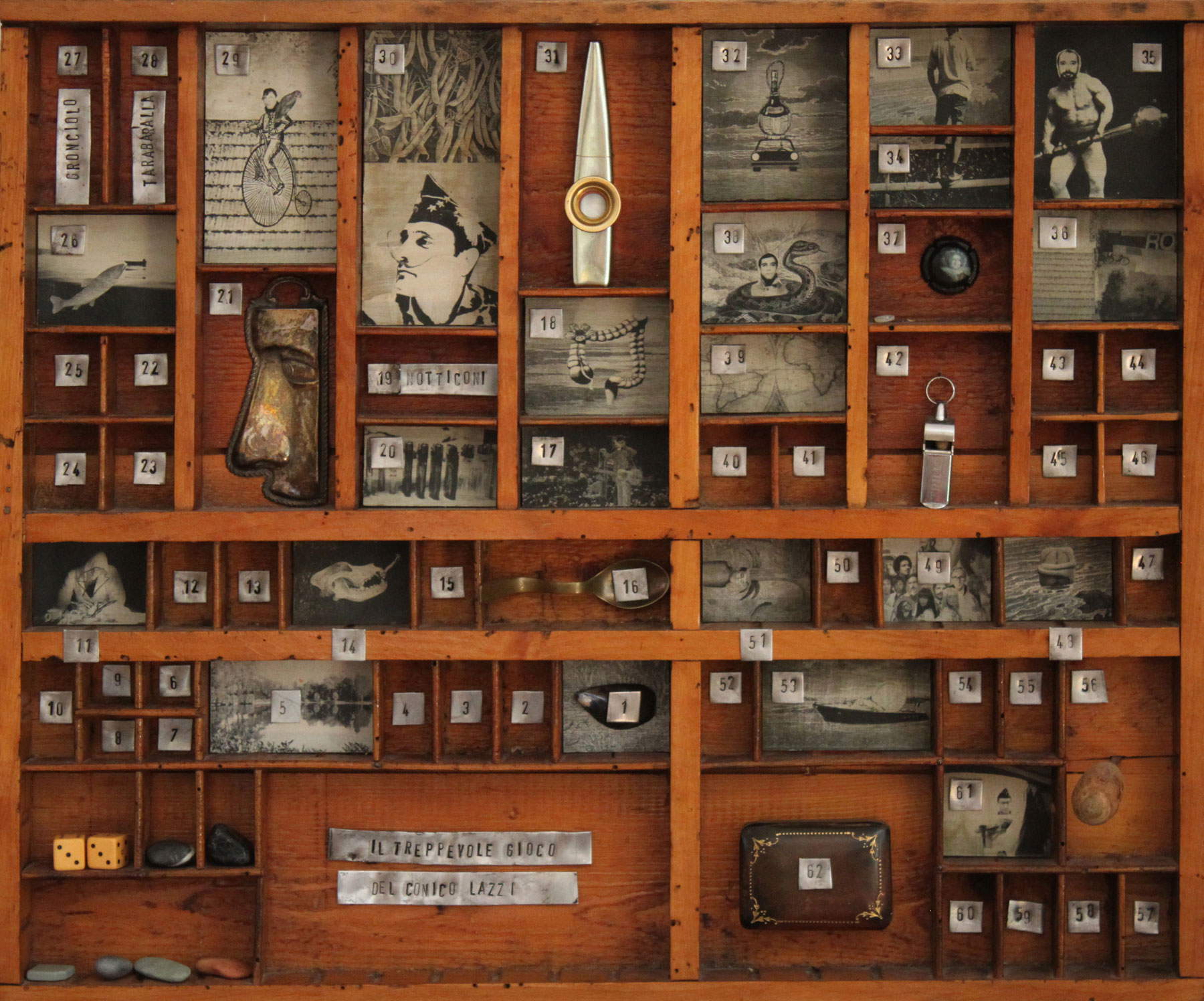
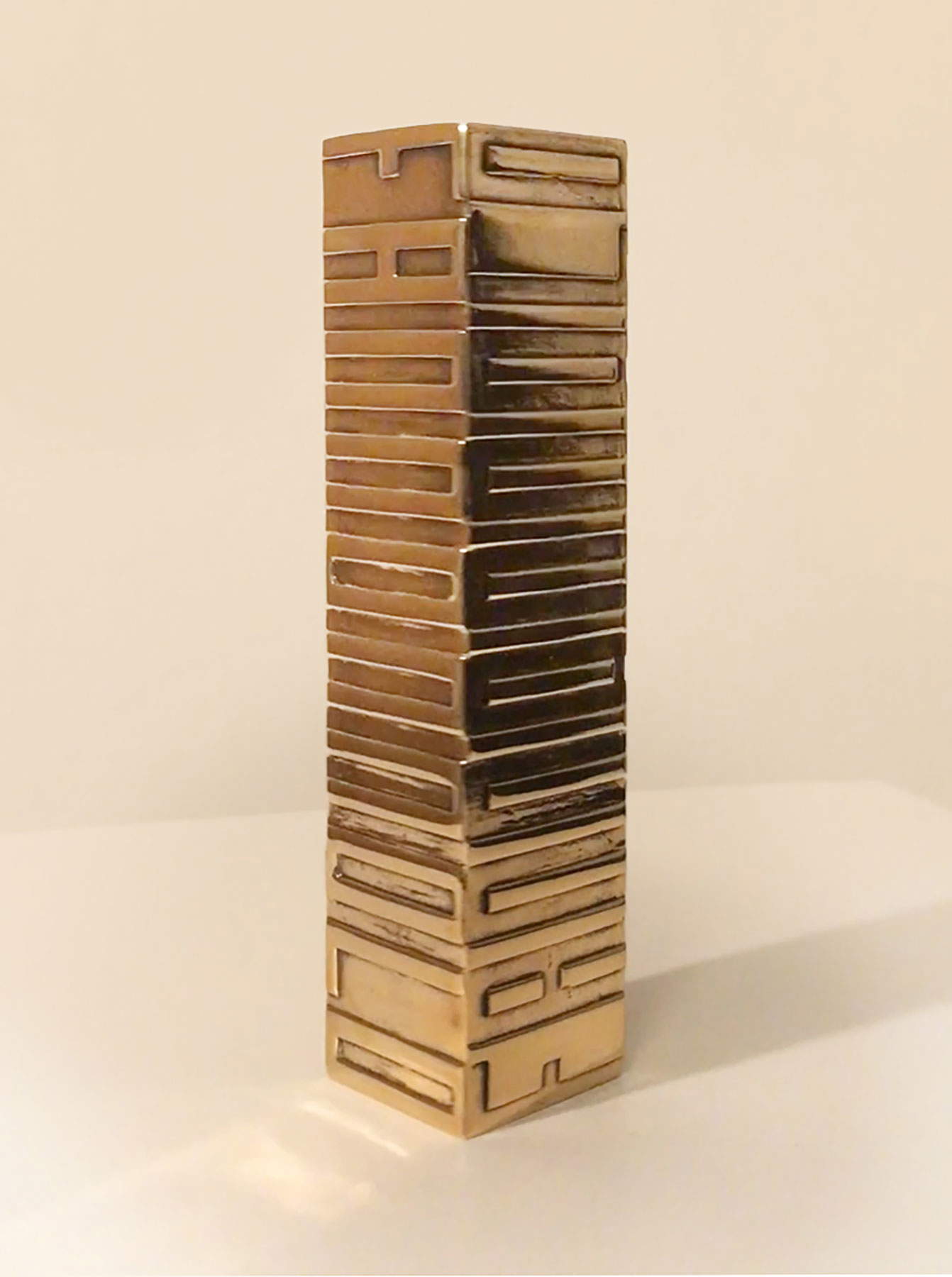
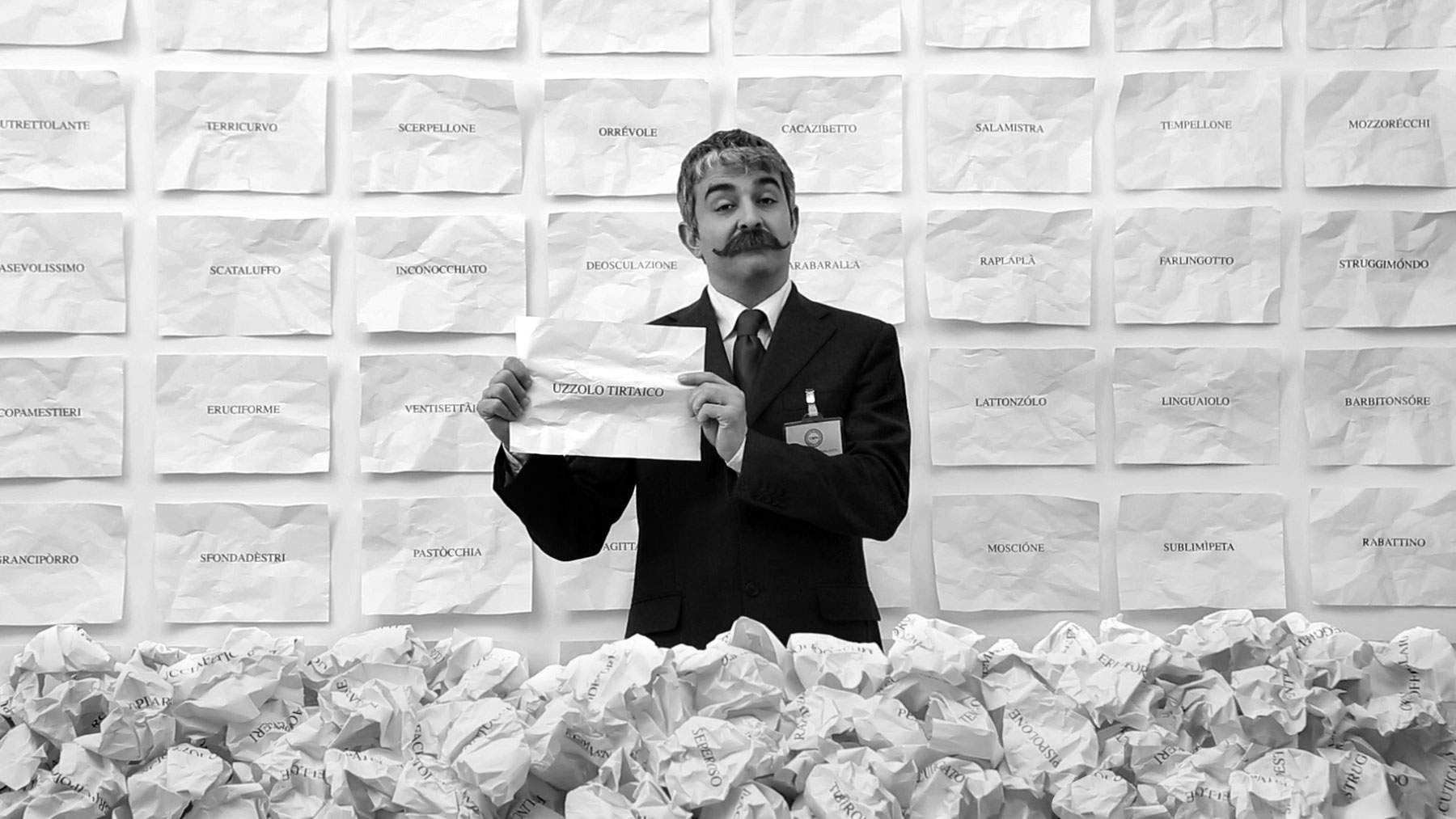



In addition to accounts of some of the projects carried out by Sabrina D’Alessandro during the course of her work, such as Scilingue Words for Tableaux-Piège (2015), part of Daniel Spoerri’s EatArt in trasformation exhibition in the Galleria Civica in Modena, or theArchive of Insults in a Republicized Redaction (2011), from the performance accomplished at Caos Centro Arti Opificio Siri in Terni, or the Words on the Balcony (2018), set up in a performance in Suzzara and declaimed by a marching band, the focus of the third room are the video works of the performances: These include the aforementioned Parole al balcone(Words on the Balcony), Videoparole (2010-2013) in which the artist associates a word with a very short video taken by chance, perhaps even at a distance of time, the binomials mimicked by the Divisione Mutoparlante (2015), or the Organ in charge of nonverbal illustration, examples of which are “Redamazione Rimpedulata” and “Uzzolo Tirtaico”). Ample space is then devoted to the video of the Guizzìpeda, the six-kilometer running-linguistic race that took place in 2021 in the quaint Sardinian village of Portixeddu on the occasion of the first edition of the Breath Days: each runner wore a bib with a word in Sardinian and ancient Italian related to the idea of breath. And finally, the word found during the 2020 quarantine: affatato, meaning “invulnerable by enchantment.”
The exhibition concludes in the corridor with a number of illustrations, or rather “buglions,” contained in The Book of Words Otherwise Lost, published for Rizzoli in 2011 and in the new BUR edition in 2020: these include Rodomonte Squassapennacchi, Tree of the Orrevoli Orripilatori, Some Activities of a Broomsticker, Symptoms of Rapable Minchionevolezza.
Resurrections, Insurrections, Actions 2009-2021 is a pleasant journey into the artistic-linguistic world of Sabrina D’Alessandro, during which one makes continuous discoveries, never forgetting the playful aspect, and from which one comes out with the desire to unearth new lost words to resurrect.
Warning: the translation into English of the original Italian article was created using automatic tools. We undertake to review all articles, but we do not guarantee the total absence of inaccuracies in the translation due to the program. You can find the original by clicking on the ITA button. If you find any mistake,please contact us.